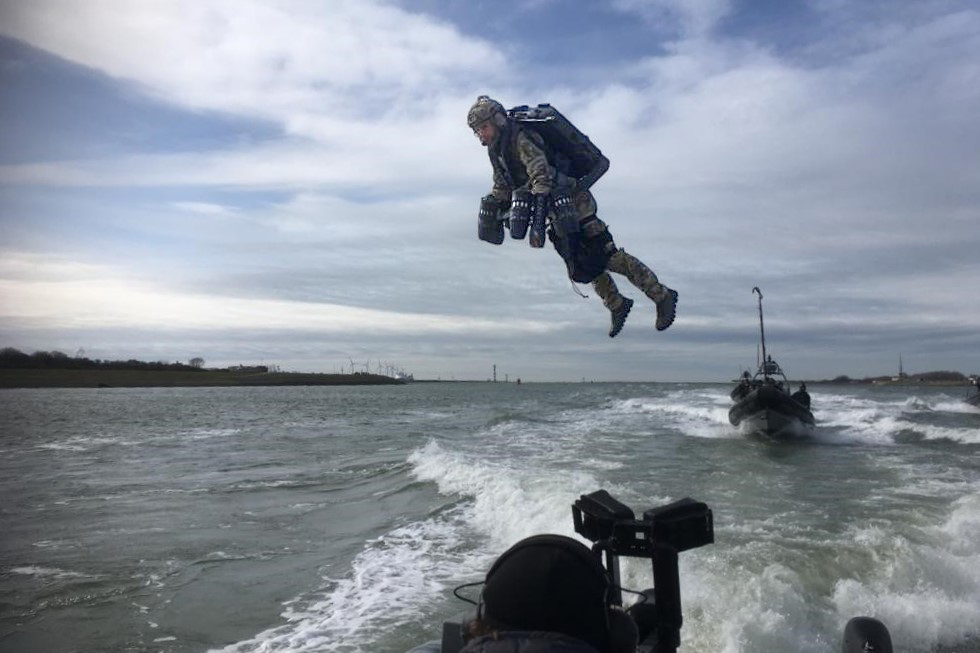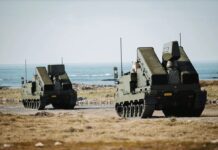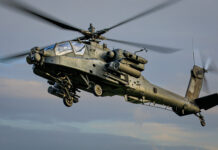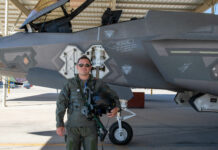The Dutch Korps Mariniers has been testing Gravity Industries’ Fly Suit. The tests were triggered by the demand to find new ways to conduct boarding operations.
The Fly Suit, which weighs 27 kg, consists of a harness with a jet-engine attached to the back and a twin jet-engine attached to each of the two forearms with a combined power of 800 kW. It is controlled by a handle and the position of the arms and legs. A flight can last between five and ten minutes at a speed of up to 50 km/h, although the flight altitude is limited to 3.7 km. The procurement price for civilian versions is in the mid six-figure Euro range.
The Fly Suit can be used to reach places that are otherwise practically inaccessible or can only be reached with great effort. This includes overcoming bodies of water, swamps, scree or rubble surfaces and vertical obstacles. Typical tasks include overcoming minefields, walls and boarding ships. Rescue services can also quickly reach the scene in difficult environments such as floods.
The high-risk tests focused on flights close to the ground. Short routes initially served to find balance and achieve stable flight operations. This was followed by mission-like routes and tasks where the limits for practical flight operations were flown. Flights at higher altitudes with increasing danger were rarely necessary for tactical reasons.
Special forces are now evaluating the trials and assessing what added value can be achieved with the fly suit. Then rules of engagement (Tactics, Techniques, and Procedures, TTP) are to be worked out before a marine is “flying” into action for the first time.
Gerhard Heiming













